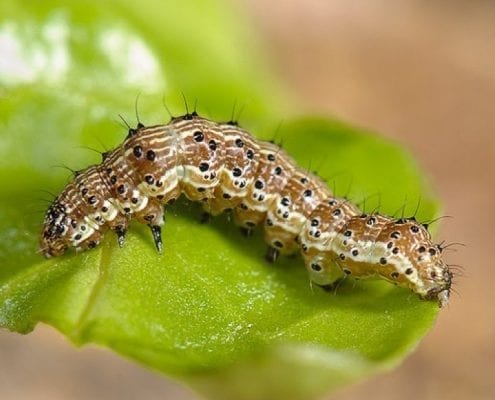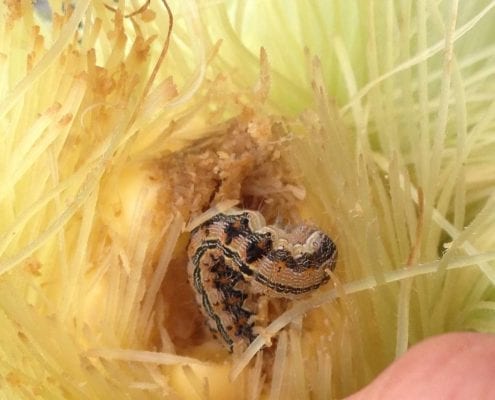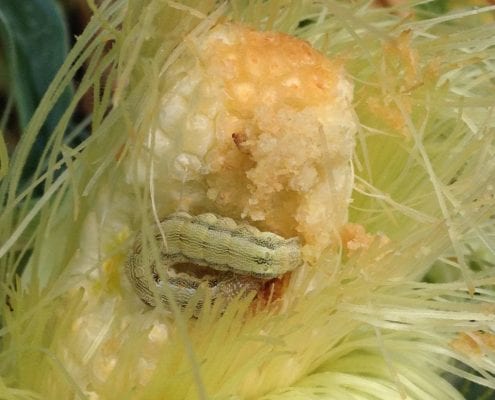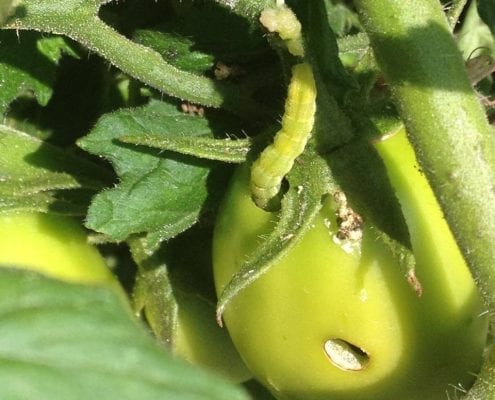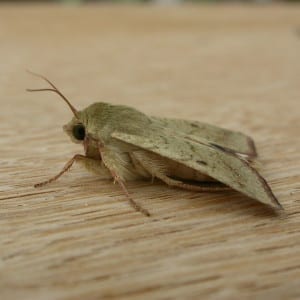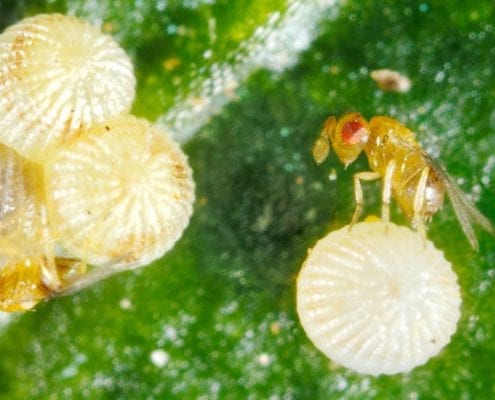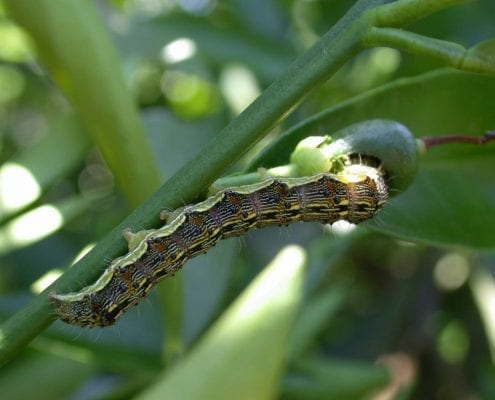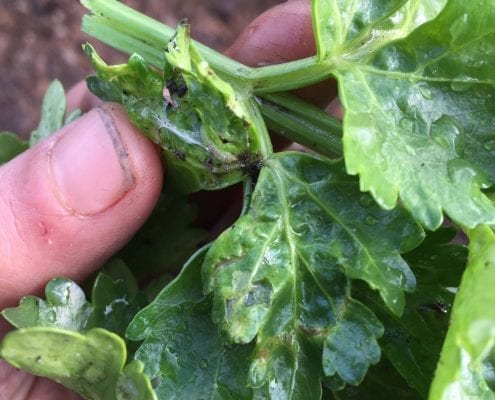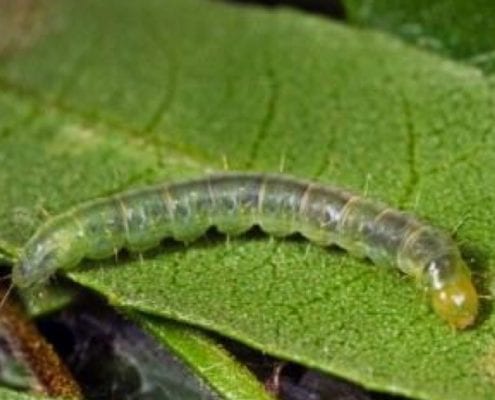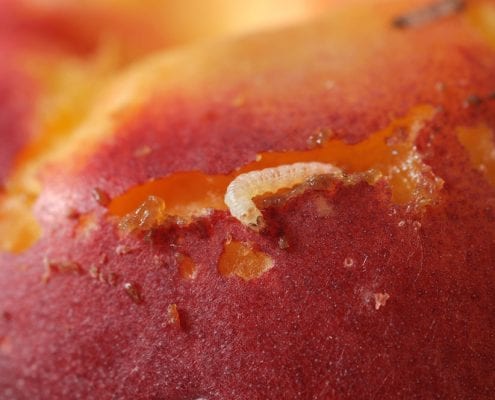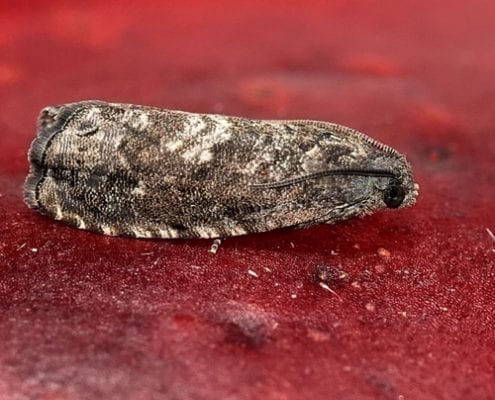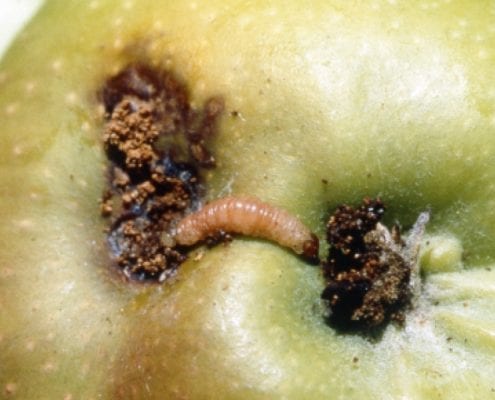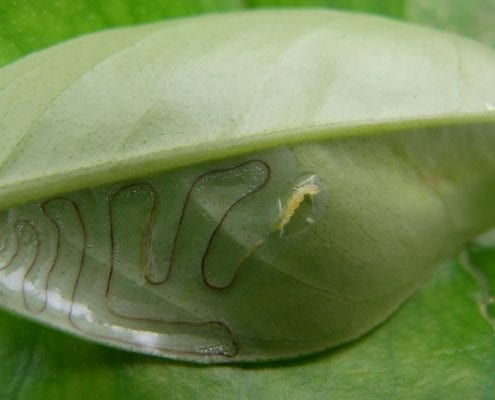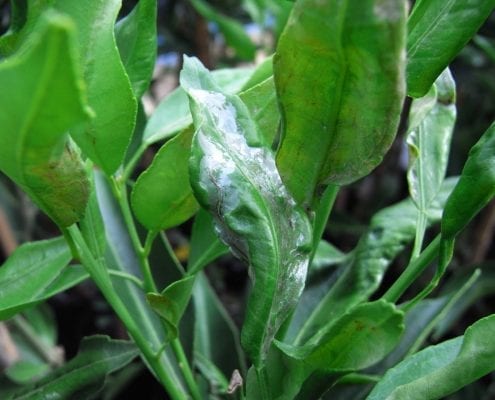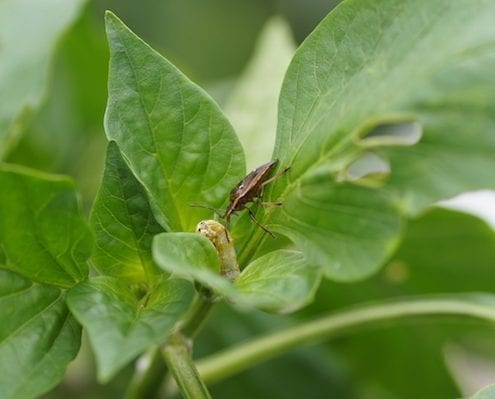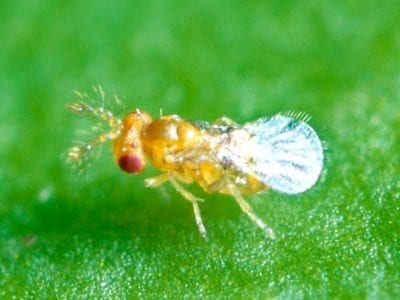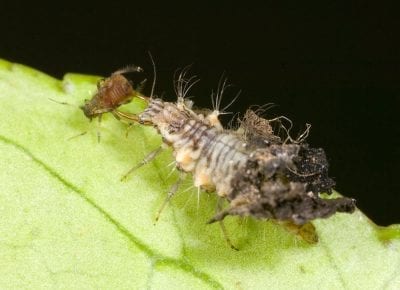Caterpillars
Caterpillars are the larval stages of moths and butterflies and when we find them chewing on plants we want to cultivate we classify them as pests. Caterpillars can cause damage to plants in many ways:
- Leaf chewing caterpillars (e.g. loopers, Heliothis, Diamondback moth and cabbage white butterfly)
- Leafminers (e.g. citrus leaf miner and potato tuber moth)
- Leafrollers (e.g. light brown apple moth)
- Caterpillars that bore into fruit and nuts (e.g. coddling moth and macadamia nut borer)
- Stem boring caterpillars (e.g. fruit tree borer)
- Stored product pests that feed on grains and dried fruit
Several caterpillar species are regarded as some of the most significant crop pests worldwide. This is in part due to their capacity to develop resistance to pesticides. Recently selective (and highly effective) chemicals have become available for caterpillar control. However the risk of resistance development remains high and it is important that we minimise the use of these products so as to preserve their efficacy into the future. The best strategy to manage caterpillar pests is an integrated approach – making use of natural enemies as much as possible and only using soft chemicals for backup when necessary.
There is a huge range of naturally occurring beneficial organisms that help to keep moth and butterfly populations in check, attacking them in the egg, larval, pupal and adult stages. Examples of these include:
- Parasitic wasps and flies
- Lacewings
- Predatory bugs (e.g. damsel bugs, shield bugs and assassin bugs)
- Bacterial, fungal and viral pathogens
- Insectivorous birds and bats
Solutions
Trichogramma pretiosum is a specific moth egg parasitoid that deposits its eggs into the eggs of a wide range of moth species. Target pests include Heltiothis (Helicoverpa spp.) and loopers.
Lacewings are aggressive general predators that feed on a range of pest insects including caterpillars.

